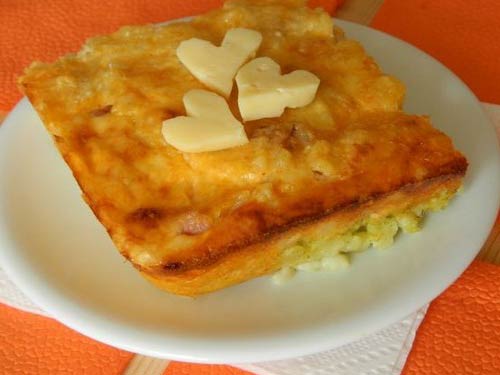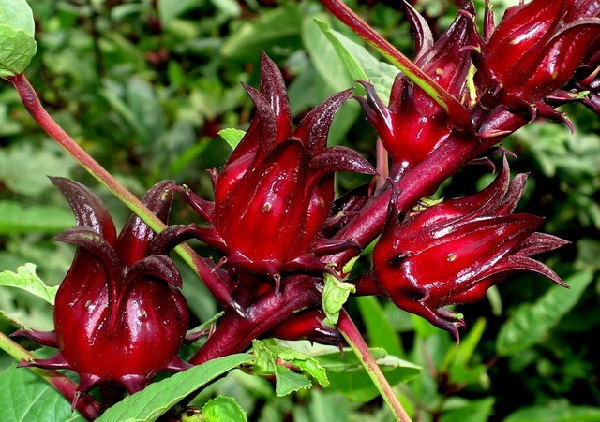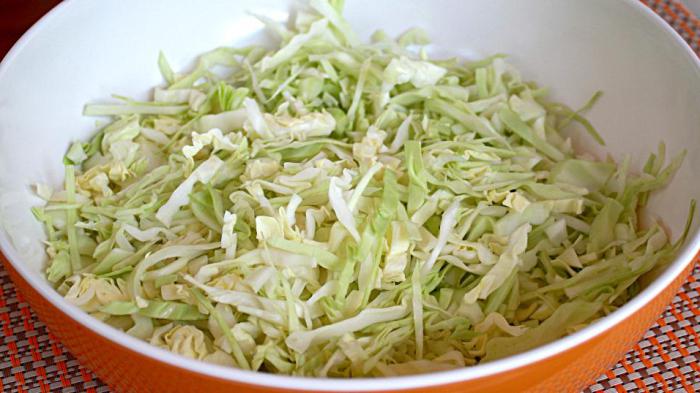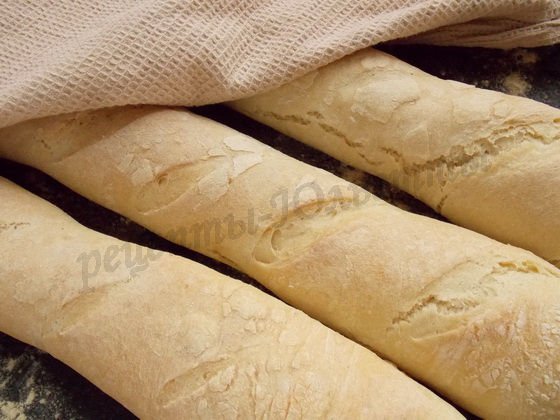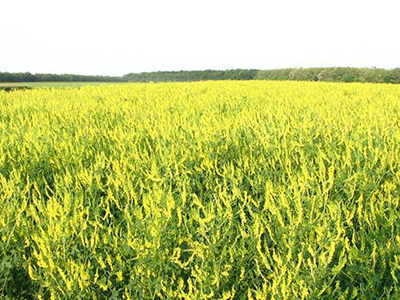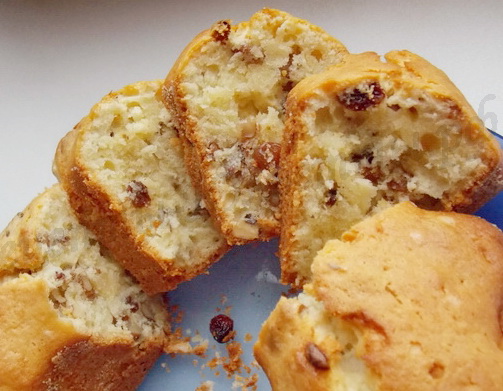All about palm oil: composition, production technology, distinctive properties, what they make of, use and why it is dangerous.
Such an exotic product as “palm oil” has recently appeared in our culinary. It is very convenient to use for the preparation of confectionery and baking, especially those that need to be stored for a long time. But nutritionists are increasingly saying that palm oil is very harmful to our health. It can be found in almost all products bought in a regular store: sweets, condensed milk, chocolate, cookies, crackers, crackers, chips and instant noodles. It seems to many that this ingredient adds a certain taste and a special touch to products. But is there any use in it?
Palm oil contains saturated fats, which can be stored for a long time and do not change their properties. It is used for the preparation of margarine, as well as various substitutes for butter and spread. This allows an order of magnitude to extend the shelf life and improve the taste and color of these products.
But at the same time, fatty acids increase blood cholesterol, provoking the development of atherosclerosis, various heart ailments, vascular thrombosis and obesity. Saturated fats are also found in cocoa butter, chocolate, chicken fat, meat, dairy products and eggs.
Many people try to replace butter with soft margarine, but if palm oil is added to the latter, this product can be very harmful. So in the store you need to read the labels very carefully.
What can I learn from the label?
In order to determine the usefulness of, for example, margarine, remember one important trend: the composition of the ingredients is always indicated as the quantity decreases. So a healthier product will be in the first place with vegetable oils - sunflower, olive, safflower, corn, and in the last - hydrogenated and hydrogenated fats.
So the last two elements are just as harmful to our body as palm oil. Liquid vegetable oils are hydrogenated with hydrogen, which leads to the formation of a large number of trans fatty acid isomers. These elements are foreign to our body, but they stick together blood cells, causing blood clots, and also increase cholesterol. As a result of this, diseases such as cancer, diabetes mellitus, infertility and impotence, myocardial infarction and coronary heart disease can develop. Most of these unhealthy fats are found in processed cheese, margarine, chips, hamburgers, ready-made puff pastry, french fries. They are also found in condensed milk, ice cream, butter (if it contains an admixture of vegetable), and chocolate.
All hydrogenated fats help make foods cheaper, which is very beneficial for the manufacturer.
Palm oil is also very cheap, but at the same time far from a healthy element. In addition to food, it is used in the manufacture of inexpensive creams and cosmetics. So such lipstick on the lips has a specific paraffin taste.
When palm oil is added to products, their taste is enhanced, which makes them eat again and again. After all, all fast-food enterprises are subordinate to this principle. Every child, and many adults, will prefer a hamburger and french fries to a plate of fresh borsch.
If a person tastes one product, it seems to be tasting like chocolate or ice cream, chips or hamburgers with palm oil. He is remembered and loved, which makes him buy and buy his favorite food again.
At the same time, this component is widely used in industry to lubricate rolling metallurgical equipment.
If palm oil is added to dairy products to extend their shelf life, they become somewhat refractory. The melting point of this element is much higher than our internal temperature, so when it gets into our stomach, palm oil turns into a sticky plastic mass and tries to cover up everything around.
In addition, this product is the strongest carcinogen, which all developed countries have long refused to use in food products. If it is contained in some kind of food, then such information must be indicated on the label.
The value of oil is measured by the presence of linoleic acid in it. So the more it is, the more expensive and more useful vegetable oil is considered. In a medium-quality product, usually up to 75% linoleic acid, and in palm oil - only 5%. It does not contain any substances useful to our body. The most balanced in nutritional value are olive and corn oil. But they should not be heated, and used only for dressing ready meals.
Some sources claim that information about the dangers of palm oil is exaggerated and untrue. But there is no research to confirm this point of view. Therefore, if you want to maintain your health and the health of your loved ones, try to minimize the number of products containing palm oil in your diet.
Ekaterina, www.site
In recent years russian milkmen We were preoccupied with the problem: every year more and more palm oil is being imported into our country, and dairy products, to which it is added, already make up 30% of their industry. Palm oil greatly reduces the cost of production and prolongs the shelf life of the product, but it is harmful to health.
Recently, manufacturers of milk and products made from it have contacted proposal to V.V. Putin: force manufacturers to write “contains palm oil” on product packages or even ban its import into our country. However, it is very difficult to “force” to refuse to receive huge profits for those who have already heated their hands in palm oil and turned into a millionaire in six months. No wonder in the countries that sell palm oil - Indonesia, Thailand, Malaysia, India and Nigeria, they say: it is more profitable to have a plantation of oil palm trees than an oil well.
Palm oil It has a pleasant aroma and taste of milk cream, due to which it can significantly enhance the taste of the products to which it is added. In addition, it significantly extends the shelf life and reduces the cost of goods. Clear business corporations that receive large profits by selling and using the "palm", every year they try to increase business income. Therefore, today most of the dairy products sold in our stores has nothing to do with milk.
Palm oil mainly used as an alternative to milk fat. Most of it is found in margarines, butter, cheese, sour cream, cottage cheese, yogurt, condensed milk and dried cream. In addition, in order to improve the taste and appearance of the product, extend the shelf life, palm oil is added to cakes, cakes, rolls, muffins, crackers, cookies, rolls, chocolates, bars, glazes and chocolate itself. Palm oil is indispensable in the preparation of chips, french fries, fast food, hamburgers, cheeseburgers, etc.
Technical regulation of the Customs Union the use of pure palm oil in food products on its territory is officially prohibited. Only “milk fat substitute” is allowed to be added to dairy products - palm oil, which is close in terms of milk fat. However, it is unprofitable for manufacturers to observe this regulation, because palm oil costs 5 times cheaper than milk fat. Therefore, those who buy an expensive substitute for vegetable fat complain that they are selling ordinary palm oil instead!
In 2005 World Health Organization officially recommended reducing palm oil intake to prevent an increase in the number of patients with cardiovascular disease. Especially harmful is the use of products containing palm oil for young children. It is proved that frequent regurgitation, colic, constipation in babies are a consequence of feeding with baby mixtures, which contain palm oil!
Recently, they have increasingly become advertise palm oil, describing its unique useful properties. And this is true, but only expensive red palm oil, which is unprofitable to add to food, is useful. The commercial interests of the manufacturers force them to look for a replacement, so they make their products with industrial palm oil, which is hazardous to health.
In countries The European Union it is allowed to use palm oil with a peroxide number of not more than 0.5 units in food production, and in Russia the indicator is 10. The oil is used in the West as machine oil for lubricating equipment, and we eat it! In addition, according to GOST, palm oil should be transported in stainless steel cans, and recently it turned out that the main importer of the “palm” to Russia, the Food Ingredients Group of the EFKO group of companies, transported palm oil in containers from petroleum products. Most often, this oil is stored in plastic tanks, for this reason cadmium, arsenic, mercury, lead and other heavy metals hazardous to health may be present in it.
Palm oil obtained from the fruits of a special oil palm. It contains more than 50% saturated fatty acids and, like animal fat, has the property of being deposited in arteries and contributing to increased cholesterol. Palmitic acid, which is one of the main components of palm oil, promotes the formation of fatty plaques on the walls of blood vessels and, if overused, leads to atherosclerosis, heart disease and can provoke oncology.
Unfortunately, it is very difficult these days to protect yourself from consuming such harmful palm oil. After all, to reveal its presence in the product is almost impossible. Manufacturers on the labels instead of the words "palm oil" usually write "vegetable oil" or "vegetable fat", which we perceive as a useful product.
Nutritionist Arian Gryumbax recommends: "To protect yourself from the harmful effects of palm oil, the main thing is to limit the use of industrial products and not eat what was not during your grandmother's life!". This means, try to consume natural milk and products made at home. Do not buy confectionery and dairy products with a long shelf life, especially try to limit children from consuming them. Never eat fast foods, chips, cheap rolls, cakes, pastries, curd cheeses, condensed milk, cheese and curd products, yogurts, ice creams, chocolates and candy bars. Do not save money to the detriment of health!
If the label says “without palm oil”, this is perceived as a safety sign. Is the sensational vegetable fat really harmful, and why is it added to dairy and confectionery products? Let's talk about the benefits of palm oil, real harm and areas of application.
What it is
What is palm oil, and from which palm do they make it? The source of raw materials is the fruits of the oil palm, which grows in equatorial West Africa, as well as tropical regions - Indonesia, Malaysia, etc. The fruits are carefully selected and subjected to various pressing techniques. Fruit seeds are also used to make oil: this product is called palm kernel.
Structure
The basis is a clean, unrefined cold pressed product:
- Most of them are saturated and unsaturated fatty acids: palmitic, lauric, oleic, palmitoleic, linoleic, linolenic, etc.
- Vitamins in it are much less than in olive or sunflower, but the composition includes tocopherol acetate (vitamin E) and carotenoids.
- A pair of trace elements is also found in oil - it is iron and phosphorus.
The final benefit depends on the degree and method of processing raw materials. In order not to be mistaken and really assess the harm, you need to get acquainted with the varieties of palm fruit oil and the scope of each type.
Kinds
The ratio of benefit and harm, as well as the scope is determined by the type of oil:
- Red oil is considered the most beneficial. It is easy to recognize by its characteristic carrot color. This property is explained by the carotene content. Red oil is produced in the most gentle way and without refining. This allows you to save a maximum of useful vitamins and acids. Other distinctive properties of the product are a sweet smell and taste.
- Unlike the first variety, a refined and deodorized product has no smell, no taste, no color. Such a squeeze is used in the food industry, but its benefit is much less than in cold-pressed oil.
- Pure hydrogenated oil is very solid and resembles paraffin. Such a product goes to the cosmetic and household industries. It contains a lot of oxidized fats, and vitamins are practically absent. This oil is the cheapest, and therefore some food manufacturers are replacing it with conventional refined oil in order to save. Such food leads to the accumulation of free radicals in the body, and this is fraught with oncology! Hence the fear of a palm tree: you never know what its appearance was added.
Interesting fact
Red squeezed palm fruit is a traditional product of residents of West and Central Africa. During excavations of burial grounds 5 thousand years old a jug with traces of palm oil was discovered.
Beneficial features
Natural red product is quite good for health:
- vitamin A improves the health of the organs of vision;
- unsaturated fatty acids support the heart and blood vessels, stimulate mental activity;
- oil enhances bile secretion, cleanses the liver and intestines;
- reduces the risk of inflammation of the digestive tract;
- is an antioxidant;
- saturates the body, satisfies the feeling of hunger, as it is high-calorie - 899 kcal per 100 g;
- as a part of cosmetics helps to heal, nourish and smooth the skin.
What is harmful: a detailed review
Let's take a look at the chemical composition again. The presence of certain substances does not mean unlimited benefits - you need to understand their percentage.

What is the harmful squeezing of the oil palm:
- The main story that warns people against using palm trees is the high content of saturated fatty acids. Their excess in the diet leads to diseases of blood vessels and the heart, in particular, the accumulation of cholesterol and the appearance of plaques. Mortality from CVD diseases is the most common in the world. With a low content of linoleic acid in palm oil, there is a lot of palmitic. This fatty acid reaches 44%. It is these fats that lead to the accumulation of bad cholesterol.
- Vegetable oils are classified according to the content of linoleic acid: the more it is, the more valuable the product. So, average indicators of squeezes familiar to us - 71-75%. In palm oil, they do not exceed 5%. Linoleic acid belongs to the group of polyunsaturated fatty acids, which lower cholesterol and neutralize the effects of saturated fats. Thus, palm fat does not fight cholesterol and does not neutralize the effect of palmitic acid.
- The harm of squeezing for a person is not limited to the load on the cardiovascular system. Other organs also suffer: the gastrointestinal tract, nervous, excretory systems. Toxins accumulate in the intestines. Slagging of the body leads to oncology, which is the second cause of death after diseases of the heart and blood vessels.
- With the constant use of palm substance, working capacity decreases, a person is more often subjected to stresses. If you ignore these signs, one day there are serious malfunctions in the body.
Contraindications for use:
- age up to 18 years;
- diseases of the cardiovascular system;
- gastrointestinal tract problems during exacerbation;
- osteoporosis, osteopenia;
- pregnancy or lactation;
- age 50 and older.
Signs of individual intolerance: edema, difficulty breathing, coughing, skin rashes.

Palm oil and ecology
Wildlife advocates should be outraged by the fact that hectares of rainforests are cut to grow oil palm trees. So, for the benefit of manufacturers of cheap broadcasts, the planet is deprived of its "lungs", because it is evergreen forests that ensure the stability of the atmosphere. Rare species of animals whose houses were cut down forests die, and this threatens their final destruction.
Caution: palm oil in baby food
The magazine "Polzateevo" draws attention to: who really should not eat palm fats, it’s for children. However, the substance is included in infant formulas. This component reduces the absorption of calcium by almost 2 times. These are serious figures for a growing body: calcium, as a building block for the skeletal system, is especially necessary for babies.
Palm oil in baby food interferes with the absorption of other substances. The result - digestive disorders, constipation, poor health of the child, slow development.
Where applicable
Palm oil is one of the most common vegetable fats worldwide. This is a very cheap and affordable raw material, while it has interesting chemical and physical properties. For example, it is resistant to oxidation, which means it is stored for a long time.
The main purpose of adding to food products is to replace animal fat and extend shelf life. In some cheeses and sour cream, especially from the low price segment, there is not a drop of milk fat.
What foods contains palm oil?
- It is added to baking. It allows you to extend the shelf life, as it is a natural preservative. Palm tree is included in the composition of rolls, waffles, cookies, cakes.
- Semi-finished products, chips are fried on it, chicken wings, french fries and other fast food are deep-fried.
- Partially palm oil is replaced with milk fat. Often a product is part of a milk product: sour cream, cottage cheese, cottage cheese desserts, condensed milk, cheeses.
- It is a component in cosmetics for skin and hair.
- Based on the technical form, soap and candles are prepared.

It’s easier to say where palm oil is not used than to list all areas of its application. According to some reports, up to half of all products contain refined palm fats.
We determine palm oil in the composition
How to find out if the product has a harmful palm squeeze? There are four warning signs:
- We read the label: some manufacturers in good faith indicate that the product contains a palm tree, but not all do this. Palm oil is hidden under the mark "vegetable" or "vegetable fat", as well as "palm olein." This latest masking needs to be closely monitored in baby food products.
- The next sign of adding cheap fat is the name of the product. According to the law, it is called "milk-containing product", "curd product", "condensed milk", "butter", etc. There is a clear difference from the traditional names “milk”, “cottage cheese”.
- Look at the cost. If the price is suspiciously low, the probability of palm content is very high, and a product of not the best quality was taken.
- Shelf life. If yogurt can stand on the shelf of the refrigerator for up to 6 months - this is not a natural product.
Advice! Please note: in the composition, palm oil is sometimes referred to as palmoil.

Product myths, funny and not so
Palm oil, which has recently appeared on our market, has already overgrown with many myths about the dangers and benefits. What is the truth, and what remains only to laugh:
- “Palm oil is very healthy due to its carotene, vitamin E and other valuable compounds.” Yes, if we are talking about the red substance of cold pressed, which is used in a strict dosage. It should be understood that such a product is very expensive. And the palm is rather useful for those who live in places of its distribution and whose ancestors ate it from generation to generation. Other vegetable fats, for example, from sunflower, are more useful to residents of the northern regions.
- "In developed countries, palm oil is prohibited." This is not true. Pay attention to the statistics of production: the world share of oil produced is in the USA. Residents of Europe, where a strict ban on a palm tree is allegedly introduced, claim the opposite: it is difficult to find a product with a “clean” composition.
- “Palm oil is only suitable for making soap.” Yes and no. It all depends on the type of product. Cold-pressed red oil is an example of this: residents of some countries include it in food.
- "It is not digested in the human body." This is another myth based on melting point. Up to 90% of the product is successfully digested.
- But how can one explain the fact that the inhabitants of Africa and Indonesia from ancient times ate the fruits of palm trees and did not die out? Very simple: refining and hydrogenation technologies have appeared relatively recently. It turns out that the ancients used the most useful type of oil - red.
Palm oil is an ambiguous food product. The harm of refined and especially technical appearance is undeniable. What about the red look? Can it be considered an elixir for health? This costly squeeze is rare in our markets.
Even if you find such a bottle, you should not abuse the substance anyway: this will lead to complications in the cardiovascular system, obesity, and cancer. The daily norm is no more than 2 tsp. per day.
You can protect yourself from palm vegetable fats by carefully studying the labels. Give preference to products marked GOST and with the usual name, not suspicious.
Shrouded in many rumors.
Due to its cheapness, as well as the impact of the media, most believe that it is very harmful and carefully avoids it.
In reality, everything is far from so simple. How do they make it?
The following are various species harvested from palm trees, a brief the process of obtaining them and.
What types are there?
Processing palm fruits, called oilseeds, produce two types of oils: palm kernel and raw palm. Crude oil is made from the pulp of the fruit, which contains fats up to 70%.
Palm kernel oil is extracted from the kernels inside the fetus. These kernels or seeds contain 10 to 30% fatwhich is considered more valuableand similar in composition to coconut oil.
How is it mined?
How it's done? Palm oil is obtained through pressing fruit pulppre-sterilized. Next, the obtained crude oil centrifuged for separation and other unnecessary inclusions.
Before this, the oil must first be heated to 100 degrees. Palm kernel oil - by pressing kernels from seeds or by their extraction.
Resources used
The homeland of the oil palm is considered Western guinea. Today tree introduced and growing throughout West Africa, Southeast Asia, South America, Indonesia, and Malaysia.
 The most large manufacturers palm oil - Malaysia and Indonesia.
The most large manufacturers palm oil - Malaysia and Indonesia.
In these countries, oil palm is grown plantations.
On the plantations, fruits are harvested and then transported to plantwhere they get the oil itself.
Fruits hang in the form of bunches, each 3-4 cm long. dry steam treatment, in order to separate the fruits from the bunch. Next they are exposed pressingto get oil.
Further processing
The oil obtained after pressing is considered technical. For nutrition applications, more deep processing.
The oil goes through five stages refining:
- Getting rid of mechanical impurities.
- Stage hydration. Using this process, phospholipids are recovered.
- Getting Free Fatty Acids Process neutralize.
- Whitening.
- Deodorization.
The result is finished refinedpalm oil used worldwide.
Chemical components
Main component Palm oils are palmitic and stearic acid. They are saturated fatty acids and make up 50% of the composition. Are considered harmfulfor the body in large quantities.
 Up to 40% palm oil - monounsaturatedfatty acids (oleic).
Up to 40% palm oil - monounsaturatedfatty acids (oleic).
They are useful acids that help cleanse excess cholesterol and increase vascular tone.
Up to 10% polyunsaturatedacids (linoleic).
Such fats improve metabolism, and are considered very important for normal human life.
Palm oil is enriched with a significant amount tocotrienols- one of the modifications of vitamin E.
In addition, it is the source vitamin A. But during processing, a significant part of these vitamins is lost. There are more gentle technologies that allow save useful itemsin the composition. The oil so extracted is called redpalm.
Palm kernel oil reminds in composition coconut. The basic composition includes saturated lauric and myristic acids. Unsaturated oleic and linoleic acids are present up to 33%due to them, palm kernel oil has a higher iodine number.
Myths about mining
The most common palm oil myth is rumors that it is made from palm trunks. In fact, such suspicions are absolutely baseless- the sources of oil are the fruits. Moreover, both the pulp and the core.
This product has found such popularitydue to the simplicity of its extraction. Locals even get it today manuallyand eat. They throw the fruit into boiling water and the floating oil is collected, and then squeeze the pulp extracted from the water. But the oil thus obtained edible short time, but the one obtained at the production is characterized by the storage length.
Thus, it turns out that palm oil not so harmful. In any case, no more harmful than the usual creamy. Cheapness is determined by the ease of its extraction, and popularity among manufacturers - at the cost ofand the possibility of long-term storage.
There are very useful components, especially in red palm and palm kernel oils.
 However, it cannot be called harmless either, the presence of saturated fatty acids in large volumes harm the body.
However, it cannot be called harmless either, the presence of saturated fatty acids in large volumes harm the body.
Don't be scared, if palm oil is found in the composition, you only need to intelligently approach the amount of its consumption.
About how and where produce palm oil, you can find out by watching the video:
Why did palm oil begin to be added to all products? Properties of palm oil, which is due to its harm to humans. What causes the harm of palm oil to humans?
In Thailand, Indonesia and Malaysia, a plant such as oil palm is very common. This is a very cheap product, while palm oil is very close to butter in terms of composition. Both palm and butter contain the same amount of saturated fatty acids, but palm oil contains twice as many polyunsaturated fatty acids. There is a difference in texture, at a temperature of 45 degrees, palm oil remains creamy, so it is convenient to use it for the manufacture of dairy products and confectionery.
Palm oil for domestic use in manufacturing countries differs from that sent for export, including for our country. In order to get high-quality palm oil, fresh fruits are needed, the spinning process occurs no later than within 24 hours after collecting the fruits from the palm. Raw materials undergo multilevel preparation and cleaning, then they are packed in airtight containers for sale. Processing and packaging must occur very quickly, the tightness of the packaging must not be compromised, otherwise the oil will undergo oxidation processes. Oxidized palm oil is a huge health hazard; this product is toxic and can cause cancer. In Russia there is a regulation on the food industry, according to the document, only high-quality palm oil should be allowed into production, but despite this, manufacturers often use oxidized palm oil.
There is an opinion that palm oil cannot be broken down in the human body due to its high melting point, but this is not true. A special enzyme, lipase, works in the human intestines, it performs the function of splitting fats and will cope with palm oil, as well as with other oils. However, a high melting point will affect the duration of digestion, the process will take longer.
Why is palm oil dangerous?
Palm oil, like many other common foods, contains saturated fatty acids, their excessive consumption leads to violations of the integrity of the walls of blood vessels. This is only one of the reasons leading to such consequences, but at the same time it is very common. The American Association of Cardiology does not recommend exceeding the daily intake of saturated fat - this is 7% of the total calorie intake of the daily diet, and when consuming palm oil it will be very easy to exceed the norm.
Using palm oil, the manufacturer misleads the consumer. It is advantageous to add a low-cost product to dairy products and confectionery instead of butter, to fry chips and other snacks on it, moreover, it can be omitted from the list. According to the rules of the current legislation, cheese using palm oil should deal with a cheese product, cottage cheese with a curd product, but this recommendation is constantly violated.
There are several criteria by which you can identify the content of palm oil in foods. The first and main of them is cost, palm oil products are significantly cheaper. Cheese costing 250-300 rubles per kilogram and cottage cheese at a price of 100 rubles per kilogram cannot be natural, they were cheaper due to palm oil. If we are talking about dairy products, then they should not contain vegetable fats, so if you found such a component in the composition, you know - palm oil is so veiled.
Palm oil becomes even more dangerous when it undergoes hydrogenation, that is, when solid fat is made from it. In the process, trans fats are formed, they are disconnected in structure from those fats that are necessary for a person.
The body uses fats to build cell membranes, it is very difficult to build them from trans fats, and if it works out, the cell will become unviable.
Cells begin to break down, not living their biological cycle to the end, it accelerates aging and contributes to the development of age-related diseases.
Most often, palm oil is present in those products in which there are enough harmful additives without it - these are chips and crackers, cookies and sweets, yogurts and processed cheeses with a lot of dyes, flavorings, stabilizers, salt and sugar. Palm oil is also used for frying, it is prepared in inexpensive fast-food establishments, the frying process is the most harmful processing of products, especially with low-quality oil. If you choose the most natural products for your diet, then protect your body from the harmful effects of palm oil.

